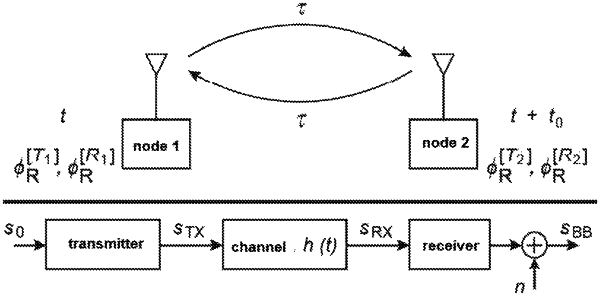| CPC G01S 13/876 (2013.01) [G01S 13/762 (2013.01); G06F 18/2155 (2023.01); G06N 3/04 (2013.01); G06N 3/08 (2013.01); G16Y 10/75 (2020.01); G16Y 40/60 (2020.01)] | 13 Claims |

|
1. A method for estimating a distance between a first node and a second node of an LPWA (Low-Power Wide-Area) network, the method comprising:
successively transmitting, by the first node and the second node respectively, first and second narrow band signals on a plurality M of carrier frequencies;
successively receiving, by the second node and the first node respectively, the transmitted second and first narrow band signals;
baseband demodulating the received second and first narrowband signals;
determining a plurality of complex values representative of a forward-backward transfer function of a transmission channel between the first and second nodes, after baseband demodulating, at the plurality M of carrier frequencies, the received second and first narrowband signals received by the second node and the first node respectively, said plurality of complex values, HAR(m), m=0, . . . , M−1, representative of the forward-backward transfer function of the transmission channel being obtained by determining a product of the complex values, HAR(m), m=0, . . . , M−1 of a forward transfer function of the transmission channel, at the plurality M of carrier frequencies, with respective complex values, HAR(m), m=0, . . . , M−1 of a backward transfer function of the transmission channel, at the plurality M of carrier frequencies; and
estimating the distance separating the first node and the second node by applying the plurality of complex values representative of the forward-backward transfer function to a previously supervisingly trained artificial neural network.
|